Timms Hill is a natural attraction located in Price County, Wisconsin. It is widely known as the highest point in the state of Wisconsin, standing at an elevation of 1,951 feet above sea level. The hill was named after William F. Timm, who was a prominent local businessman and conservationist.
Apart from being a popular destination for hikers and nature enthusiasts, Timms Hill also serves as home to various species of wildlife that are native to the region. Visitors can catch glimpses of black bears, timber wolves, white-tailed deer, elk, and other animals roaming around the area.
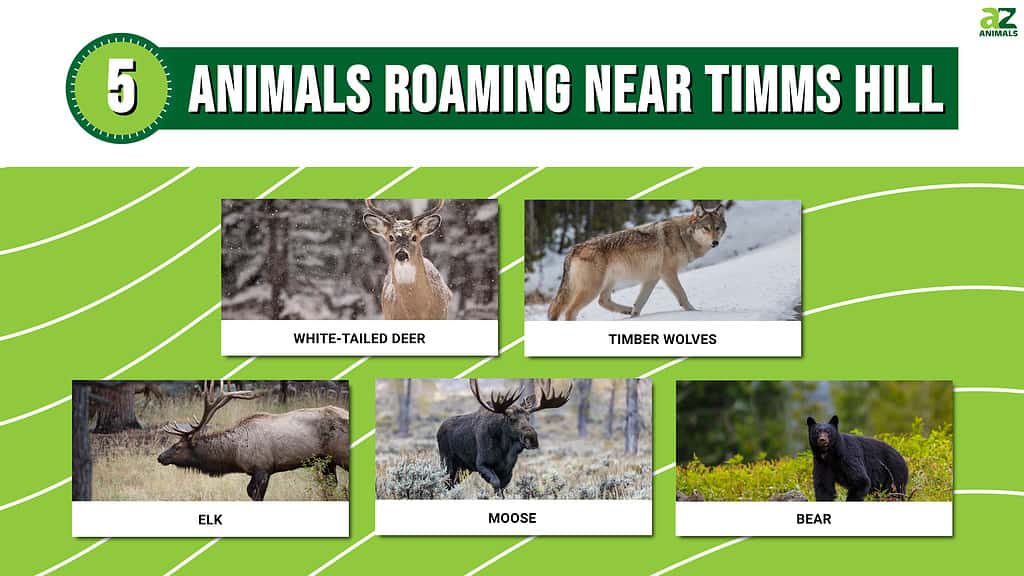
One interesting thing about this location is that it features an observation tower where tourists can climb up to get spectacular views of the surrounding landscape, including dense forests and rolling hills stretching out into the horizon.
Overall, Timms Hill offers visitors not only breathtaking scenic views but also an opportunity to witness some remarkable examples of natural biodiversity in Wisconsin’s wilderness areas. Let’s dive in and discuss the animals near Timms Hill!
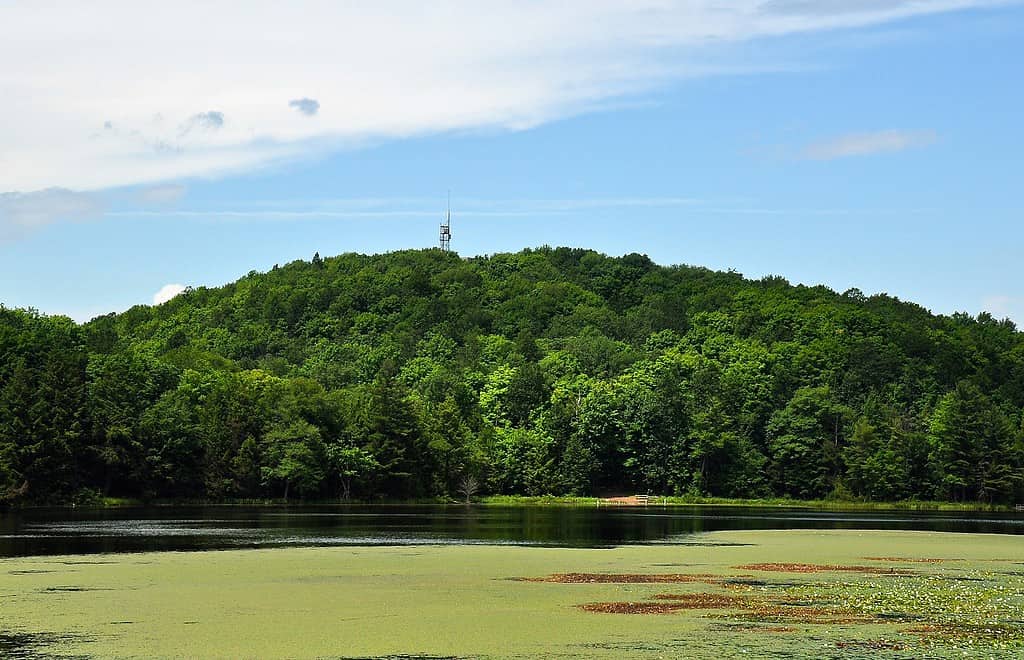
Timms Hill is located in Price County and is the highest point in the state of Wisconsin.
©Skye Marthaler, CC BY-SA 3.0 – License
Animals Roaming Near Timms Hill
Timms Hill is in the center of the Northern Highlands area of Wisconsin and is home to several species of wild animals. Here are a few of our favorites!
1. White-Tailed Deer
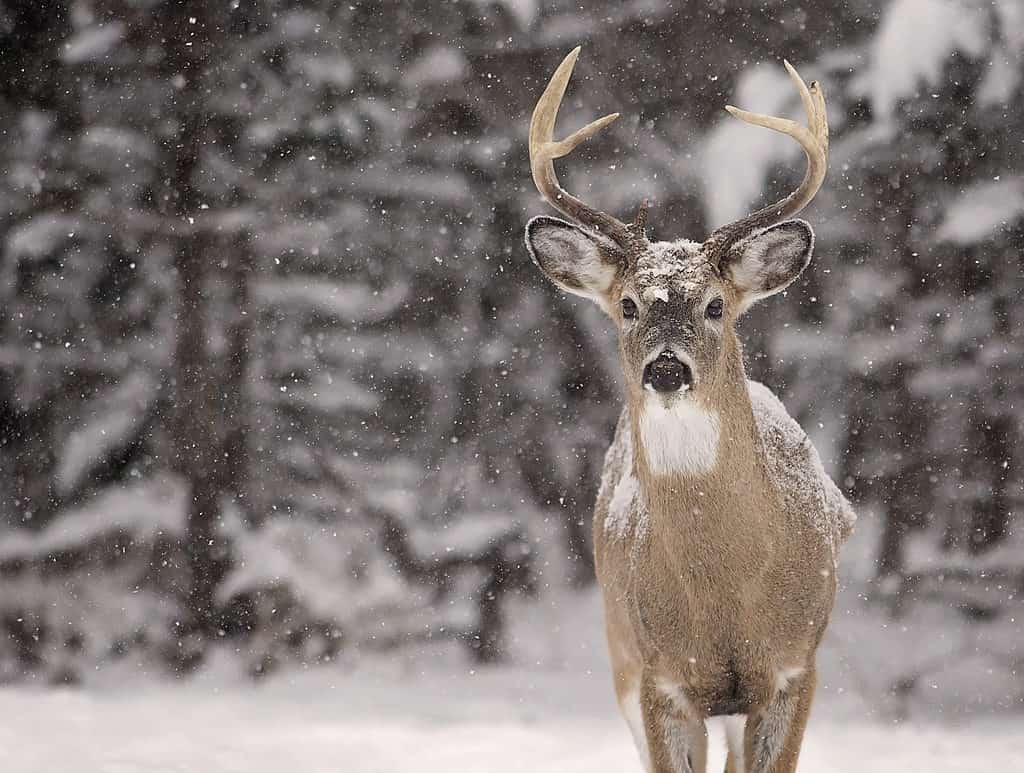
White-tailed deer thrive at Timms Hill, Wisconsin.
©iStock.com/Lynn_Bystrom
The white-tailed deer is a common sight in many parts of North America, including Timms Hill. These graceful creatures are known for their distinctive tails that flash white when they run away. They have reddish-brown fur on their backs and sides, with a lighter shade on their underbelly. At maturity, male deer can weigh up to 300 pounds, while females can weigh up to 200 pounds.
White-tailed deer are herbivores and feed primarily on leaves, twigs, buds, fruits, and nuts from trees or shrubs. During the winter months, when food sources become scarce, some may resort to feeding on bark or woody stems.
As far as habitat goes, white-tailed deer prefer forested areas but are also comfortable in open plains as long as there is sufficient cover nearby for protection against predators like coyotes or wolves. In fact, the presence of brushy thickets provides good cover for fawns during the birth season, which typically occurs from May through July.
Overall, the White-Tailed Deer is an amazing animal species worth exploring further by nature enthusiasts visiting Timms Hill – Wisconsin’s Highest Point!
2. Timber Wolves
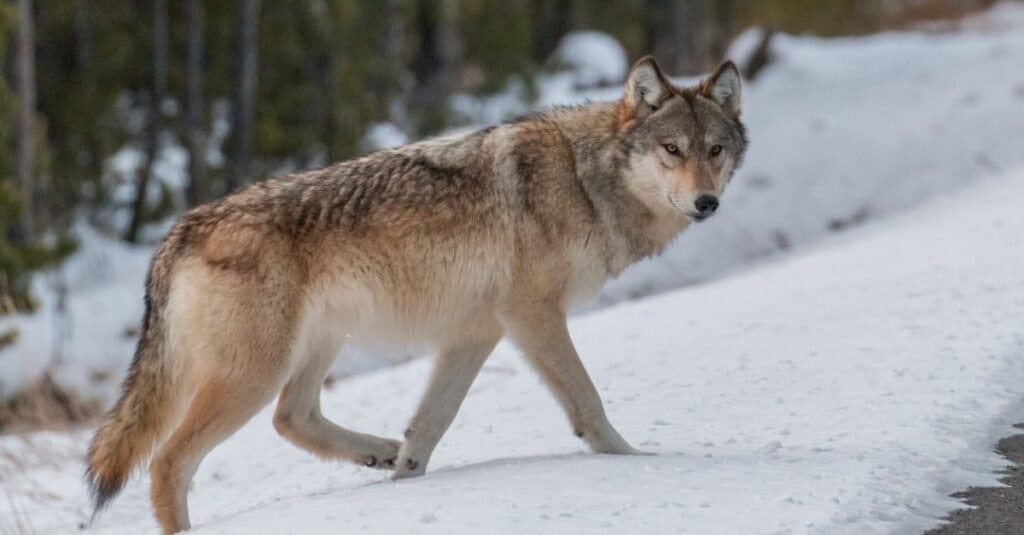
Grey wolf range throughout the Timms Hill region.
©iStock.com/mtnmichelle
Timber wolves, also known as gray wolves, are a species of canid native to North America. They are carnivorous pack animals living near Timms Hill. They are the largest wild member of the dog family and can weigh up to 150 pounds. Their fur is usually gray or brown with black markings on their backs and tails.
In terms of diet, timber wolves are carnivorous and primarily hunt large ungulates such as deer, elk, and moose. However, they will also eat smaller prey like rabbits and birds.
Their habitat varies widely across North America, but they prefer forested areas with access to water sources such as rivers or lakes. Timber wolves live in packs that typically consist of a mated pair and their offspring from previous years.
Despite being an important part of many ecosystems, timber wolves have faced significant threats from human activities over the years, including hunting and habitat loss. Conservation efforts have helped stabilize populations in some areas, but continued vigilance is necessary to ensure their survival for future generations.
3. Elk
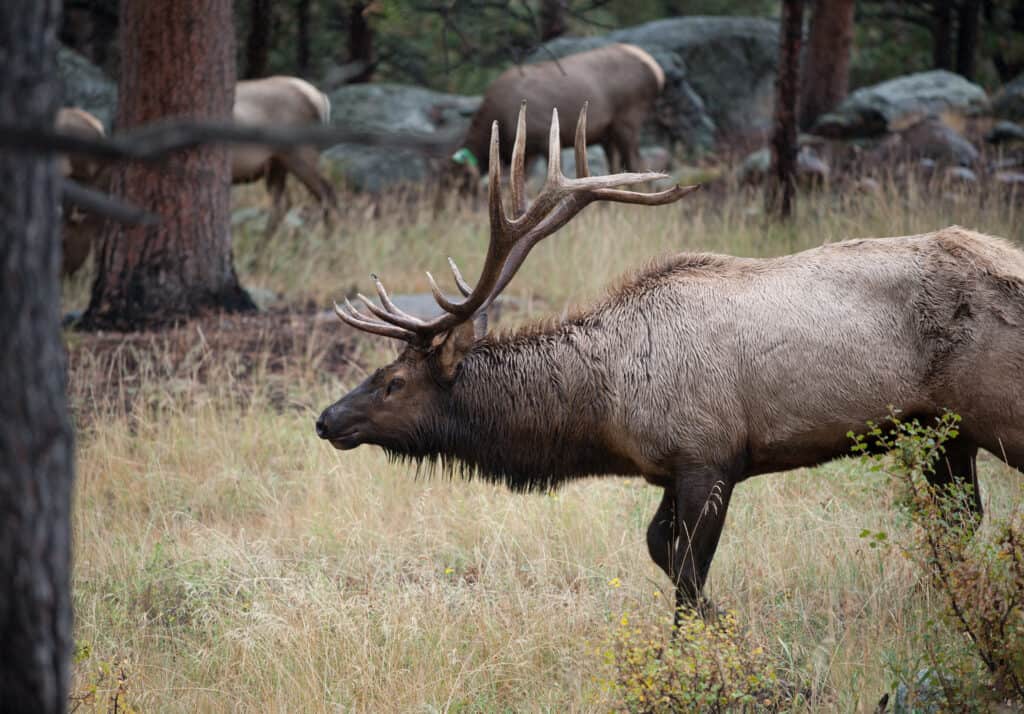
North American elk, also known as Wapiti, live in Wisconsin.
©Tony Campbell/Shutterstock.com
Wisconsin is home to the majestic and iconic North American elk, also known as Wapiti. These magnificent animals were once abundant throughout the state but were nearly wiped out by overhunting and habitat loss in the late 1800s. However, thanks to successful conservation efforts, Wisconsin now boasts a healthy population of elk that can be found roaming in select areas.
Elk are the second-largest members of the deer family after moose and can weigh up to 1,000 pounds. They have distinctive antlers with multiple points that grow each year and shed annually in early spring. Elk are primarily herbivores and feed on grasses, leaves, bark, twigs, and shrubs.
In Wisconsin, elk hunting is only allowed through a limited quota system for licensed hunters who participate in a lottery drawing. The state manages its elk population carefully through monitoring programs and research initiatives aimed at ensuring their long-term survival.
Seeing these magnificent creatures up close is truly an awe-inspiring experience. They are one of the most majestic and beautiful animals near Timms Hill.
4. Moose
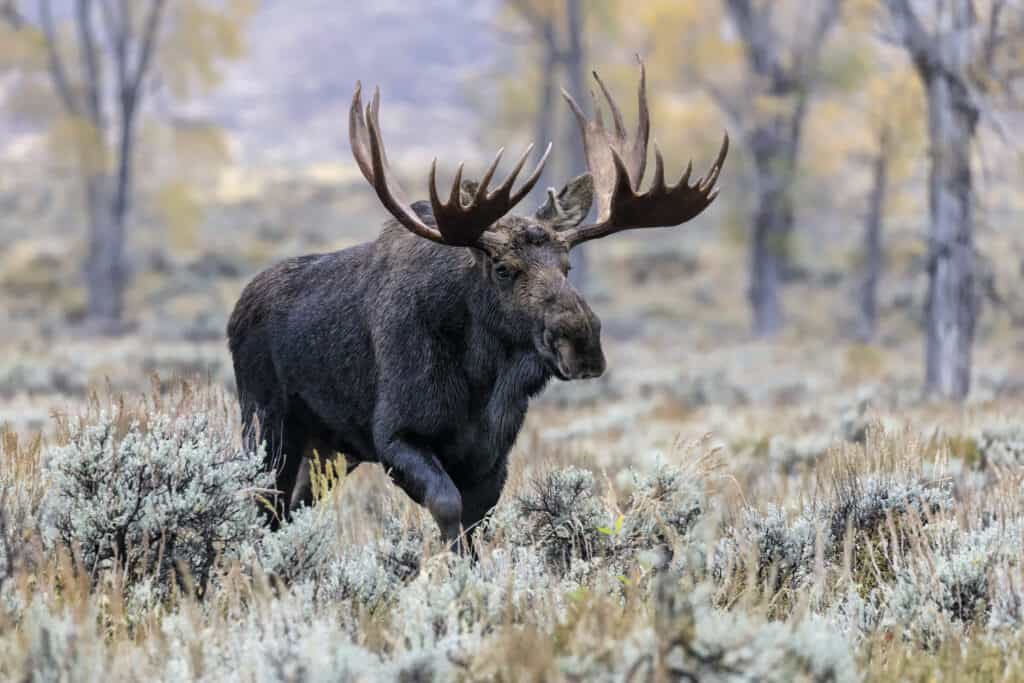
Moose grow over 1,000 pounds by eating their vegetables.
©David Osborn/Shutterstock.com
Moose are large members of the deer family, found throughout northern North America and Europe. They are known for their distinctively long legs, snouts, and antlers (only in males). Moose have a shaggy brown coat that helps them blend into their forested habitats.
In terms of diet, moose are herbivores and primarily feed on leaves, twigs, bark, and aquatic plants like lilies. During winter months, they will also eat tree buds and small branches. Their sizeable bodies require them to consume up to 60 pounds of vegetation each day!
Moose typically inhabit boreal forests near lakes or rivers where they can find ample vegetation to sustain themselves year-round. They prefer wooded areas with dense underbrush as this provides cover from predators such as wolves or bears.
Despite their size (adult males can weigh over 1,000 pounds), moose are not aggressive animals unless provoked or threatened. In fact, they tend to be quite solitary creatures outside of mating season when bulls will battle for dominance over cows.
Overall, moose play an important role in maintaining healthy forest ecosystems by controlling plant growth through browsing activities. Sightings can be rare due to their elusive nature and declining populations in many areas due to habitat loss and hunting pressures. If you’re lucky enough to spot one of these animals near Timms Hill in Wisconsin, it’s sure to be a memorable experience!
5. Bear
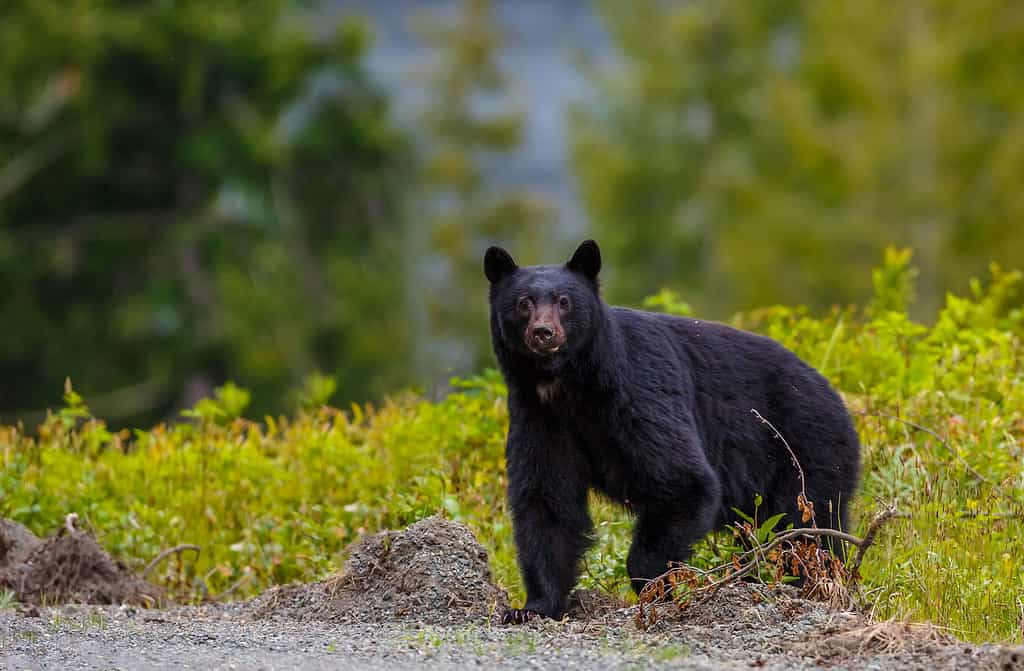
Black bears are found in the northern state of Wisconsin.
©Menno Schaefer/Shutterstock.com
The black bear can be found throughout Wisconsin’s forests and woodlands. They have a varied diet that includes berries, nuts, insects, small mammals, and carrion. Black bears are omnivores and will eat almost anything they can find.
In terms of appearance, adult black bears typically weigh between 100-400 pounds and stand around three feet tall at their shoulders. Their fur coloration ranges from blonde to jet-black, although most individuals have brown or cinnamon-colored fur.
Black bears prefer forested areas with dense cover, such as swamps or thickets, where they can hide during the day. During winters, black bears enter a state of torpor similar to hibernation until spring arrives.
It’s important to note that while black bears may look cute and cuddly from afar, they are wild animals who should never be approached or fed by humans for safety reasons.
Trees Near Timms Hill
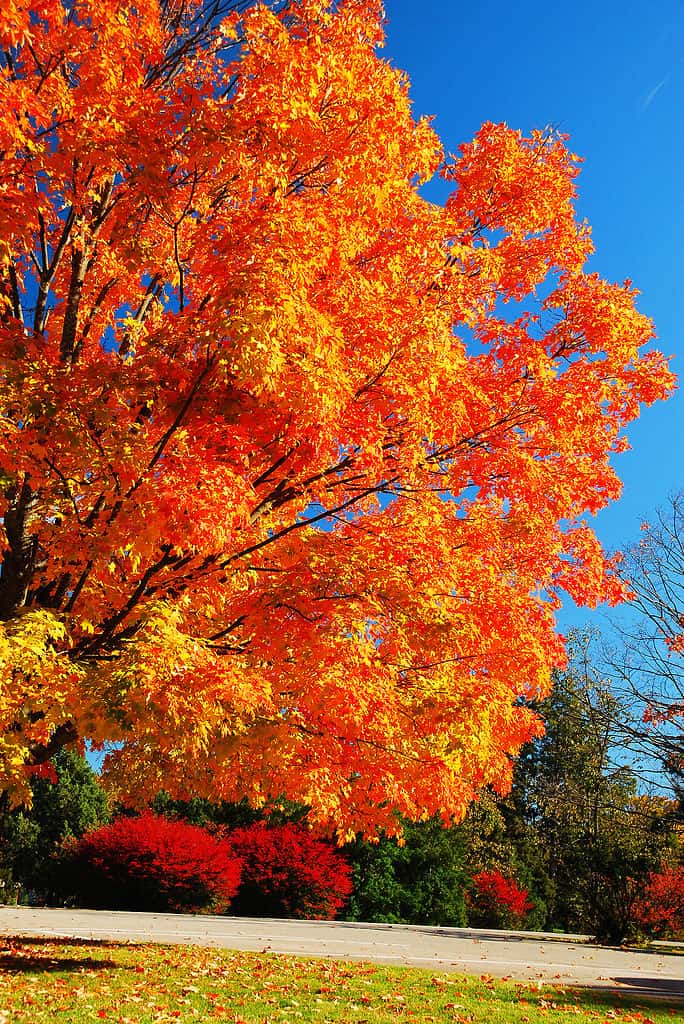
Timms Hill, in the Northern Highlands region, is home to sugar maple trees.
©James Kirkikis/Shutterstock.com
The lush and diverse foliage surrounding Timms Hill, Wisconsin’s highest point, boasts a wide variety of tree species. Among the stunning trees living in the Northern Highlands region are sugar maple, aspen, basswood, hemlock, and yellow birch. These trees offer not only beautiful views but also provide important habitat for wildlife. Sugar maples thrive in this area due to its ideal climate conditions and produce syrup that is renowned throughout the state. Aspen trees, with their delicate leaves, add an element of charm to the serene landscape, while basswood provides soft wood used for carving intricate designs on furniture or musical instruments. Hemlocks, along with yellow birch, both have a distinctive aroma and bring unique character to their surroundings.
Furthermore, red pine and white pine can also be found among these magnificent woods, which add an extra layer of diversity to this already breathtaking scene. The majestic red pines stand tall amidst other trees as they grow up to 80 feet tall with needles that appear bluish-green when young before taking on a darker green hue in maturity. These impressive attributes make them easily recognizable from afar. On the other hand, white pines boast long slender needles ranging from blue-green to dark olive-green color providing an additional texture contrast against these evergreen giants.
In conclusion, if you’re looking for a place where nature meets serenity through tree-lined paths, then Timms Hill should be at the top of your list!
Summary of 5 Animals Roaming Near Timms Hill
| Name of Animal | Type of Diet | Habitat |
|---|---|---|
| White-tailed Deer | Herbivore | Forested areas and open plains. |
| Timber Wolves | Carnivore (eats the 3 listed herbivores plus rabbits and birds!) | Forested areas with access to water. |
| Elk | Herbivore | A wide variety from open areas to coniferous forests or brushy or semi-desert areas. |
| Moose | Herbivore | Boreal forests near lakes or rivers. |
| Black Bear | Omnivore | Berries, nuts, insects, small mammals, and carrion. |
The photo featured at the top of this post is © Steve Byland/Shutterstock.com
Thank you for reading! Have some feedback for us? Contact the AZ Animals editorial team.






